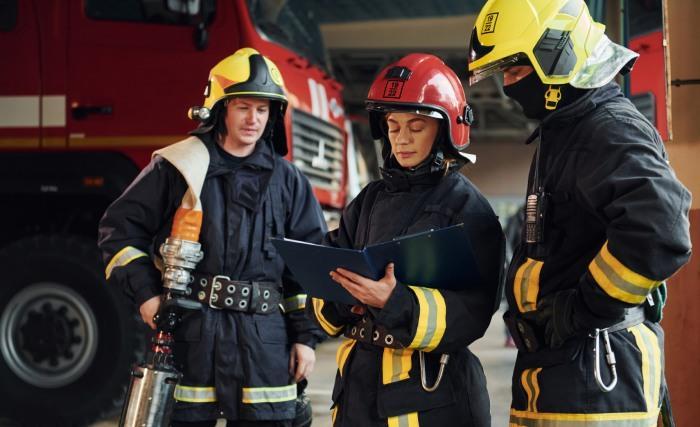Fire safety training is a critical component of workplace safety that ensures employees are prepared to prevent fires and respond appropriately during fire emergencies. A comprehensive focus on fire hazard identification and fire prevention helps reduce risks associated with fire incidents. Compliance with fire safety regulations, such as those outlined by the Occupational Safety and Health Administration (OSHA) and the National Fire Protection Association (NFPA), mandates regular training to foster a safe working environment.
Effective fire safety training not only educates employees on operating fire safety equipment but also addresses the importance of fire alarm systems and smoke detectors that detect early signs of fire. Additionally, empowering designated personnel through fire marshal training and fire warden responsibilities ensures prompt and organized fire emergency response, safeguarding employees and property alike.
The significance of such training is exemplified in initiatives like those at the J. Paul Getty Museum, where targeted fire safety programs have been instrumental in enhancing workplace safety and fire risk awareness. Through systematic training, organizations cultivate a culture of vigilance, reducing fire incidents and ensuring swift action during emergencies.
Planning and Preparing the Training Program
The foundation of an effective fire safety program lies in meticulous planning and preparation. Starting with a thorough fire risk assessment conducted by certified professionals—including entities like Fire Safety Solutions Ltd—organizations gain insight into potential fire hazards specific to their operations.
Compliance with building safety codes and integrating fire safety protocols specified by bodies such as the Fire Protection Association (FPA) and NFPA guarantees that training content aligns with statutory requirements. It is essential to include modules on fire prevention strategies, handling fire suppression systems—including those provided by industry leaders like Ansul Fire Protection and Tyco Integrated Fire & Security—and understanding fire alarm systems from providers like Kidde and SimplexGrinnell.
The training plan should clearly define objectives such as competency in fire extinguisher use, understanding fire escape plans, and implementing emergency evacuation procedures. Engaging experts to deliver content on first aid for burns enhances the training’s practical value.
Delivering Engaging and Practical Training Sessions
The delivery of fire safety training must move beyond theoretical knowledge to include hands-on and interactive learning experiences. Practical fire extinguisher training sessions allow employees to become adept at using various classes of extinguishers appropriate to different fire types, reinforcing fire prevention tactics and immediate response capabilities.
Effective presentations on fire alarm systems and smoke detectors should include demonstrations of how these devices trigger emergency evacuations. Involvement of personnel from organizations like the American Red Cross can enrich the curriculum by adding accredited first aid for burns training and emergency response strategies. Please proceed to check out for more guidance.
Conducting Fire Drills and Emergency Evacuation Procedures
Regularly scheduled fire drills are indispensable for maintaining readiness and testing the efficacy of emergency evacuation plans. These drills should mirror realistic scenarios, incorporating activation of fire alarm systems and smoke detectors to familiarize employees with auditory and visual cues of fire emergencies.
Collaborating with fire safety equipment providers like Kidde and SimplexGrinnell ensures that the drills incorporate current technology, such as integrated fire suppression systems, augmenting fire emergency response capabilities. Fire wardens play a pivotal role during drills by guiding personnel along designated fire escape plans and ensuring that no one is left behind.
Evaluating Training Effectiveness and Continuous Improvement
- Evaluation is an essential phase that gauges the impact of fire safety training and informs continuous improvement. Employing pre- and post-training assessments related to fire prevention knowledge, use of fire safety equipment, and emergency evacuation procedures allows organizations to quantify learning outcomes.
- Feedback gathered from participants, fire wardens, and fire marshals enriches the assessment process, spotlighting areas where additional reinforcement or clarity may be necessary. Regularly reviewing incident reports and fire drills data helps update the fire safety protocols and adapt training to evolving fire risks.
- Compliance audits referencing OSHA and NFPA standards ensure that the training program meets regulatory requirements consistently. Organizations like the Fire Protection Association (FPA) offer advisory support to enhance fire risk management strategies further.
- By fostering partnerships with specialized providers such as Ansul Fire Protection and Fire Safety Solutions Ltd, companies can integrate the latest advancements in fire suppression systems and alarm technologies into their training content.
- Ultimately, a robust program involves cyclical evaluation and revision, embedding fire safety deeply into the organizational culture and reinforcing occupational health and safety as a paramount priority. This ongoing commitment protects both human life and assets, demonstrating leadership in proactive fire emergency response.











